
Giovanni Antonio Canal, commonly known as Canaletto, was an Italian painter from the Republic of Venice, considered an important member of the 18th-century Venetian school.
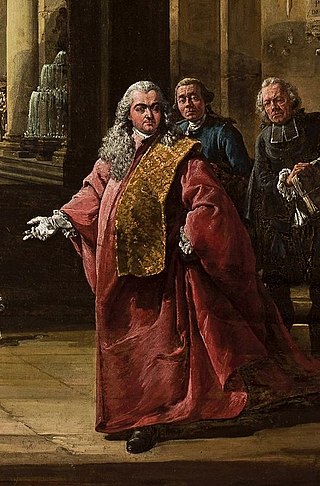
Bernardo Bellotto, was an Italian urban landscape painter or vedutista, and printmaker in etching famous for his vedute of European cities – Dresden, Vienna, Turin, and Warsaw. He was the student and nephew of the renowned Giovanni Antonio Canal Canaletto and sometimes used the latter's illustrious name, signing himself as Bernardo Canaletto. In Germany and Poland, Bellotto called himself by his uncle's name, Canaletto. This caused some confusion, however Bellotto’s work is more sombre in color than Canaletto's and his depiction of clouds and shadows brings him closer to Dutch painting.

Francesco Lazzaro Guardi was an Italian painter, nobleman, and a member of the Venetian School. He is considered to be among the last practitioners, along with his brothers, of the classic Venetian school of painting.
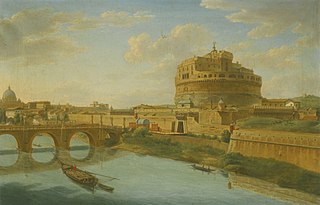
A veduta is a highly detailed, usually large-scale painting or, more often, print of a cityscape or some other vista. The painters of vedute are referred to as vedutisti.
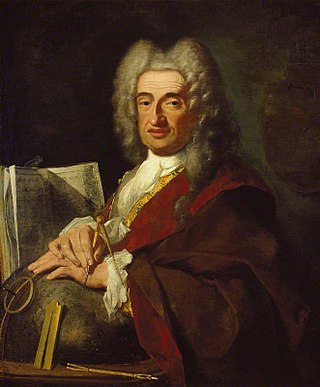
Luca Carlevarijs or Carlevaris was an Italian painter and engraver working mainly in Venice. He pioneered the genre of the cityscapes (vedute) of Venice, a genre that was later widely followed by artists such as Canaletto and Francesco Guardi.

Antonio Francesco Lodovico Joli was an Italian painter of vedute and capricci.

Andrea Celesti (1637–1712) was an Italian painter of the Baroque period, working in Venice. His style gravitated over the years from a turgid and academic weightiness to a lighter, looser brushstroke.

Leandro Bassano, also called Leandro dal Ponte, was an Italian artist from Bassano del Grappa who was awarded a knighthood by the Doge of Venice. He was the younger brother of artist Francesco Bassano the Younger and third son of artist Jacopo Bassano. Their father took his surname from their town of Bassano del Grappa, and trained his sons as painters.

Luis Paret y Alcázar was a Spanish painter of the late-Baroque or Rococo period.
Antonio Diziani was an Italian painter of the 18th century, active mainly in painting vedute or landscapes and vistas of Venice.

Antonietta Brandeis (1848–1926), was a Czech-born Italian landscape, genre and portrait painter, as well as a painter of religious subjects for altarpieces.

Venetian painting was a major force in Italian Renaissance painting and beyond. Beginning with the work of Giovanni Bellini and his brother Gentile Bellini and their workshops, the major artists of the Venetian school included Giorgione, Titian, Tintoretto (1518–1594), Paolo Veronese (1528–1588) and Jacopo Bassano (1510–1592) and his sons. Considered to give primacy to colour over line, the tradition of the Venetian school contrasted with the Mannerism prevalent in the rest of Italy. The Venetian style exerted great influence upon the subsequent development of Western painting.

Giovanni Migliara (October 15, 1785 in Alessandria – April 18, 1837 in Milan), was a nobleman and Italian painter active at the beginning of the 19th century, painting vedute and history paintings.
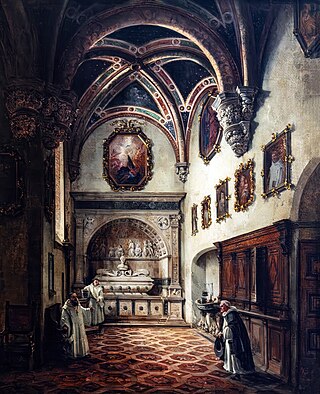
Federico Moja was an Italian painter, known best for his vedute and views of interior architecture.

Luigi Querena was an Italian painter.

Martín Rico y Ortega was a Spanish painter of landscapes and cityscapes.

Hendrik Frans van Lint was a Flemish landscape and vedute painter who was part of the group of Flemish and Dutch painters active in Rome. He was one of the leading landscape painters in Rome in the first half of the 18th century and his patrons included Rome's old aristocratic families as well as European travellers on their Grand Tour.
Giovanni Lavezzari (1817–1881) was an Italian painter.

Alberto Prosdocimi was an Italian painter and manuscript illuminator. He often painted vedute of Venice in pale and bright watercolors, often sold abroad
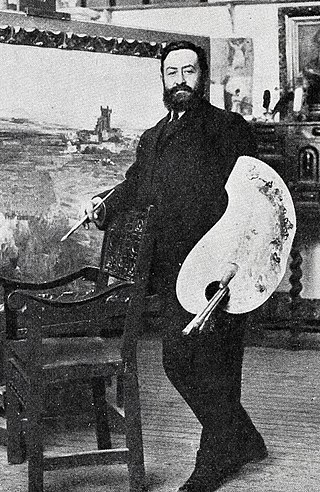
Marceliano Santa María was a Spanish painter, noted for his Castilian landscapes, historical art, and portraits.



















